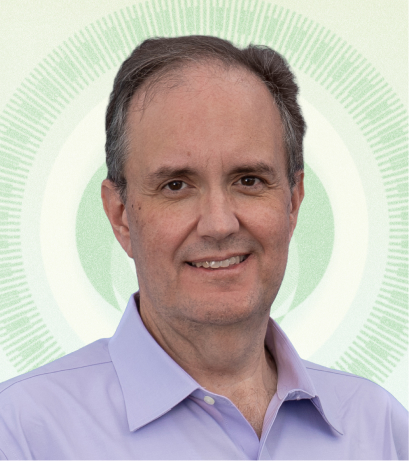
The “Yale Model” is Broken
July 7, 2025
In search of a new model for alternatives
The “Yale Model” has long been considered the gold standard of investing for universities and non-profit institutions. Pioneered by Yale’s Chief Investment Officer David Swensen in the 1980s, Yale invested heavily in illiquid, alternative investments and generally outperformed the stock market during his tenure. This model was widely adopted by other schools seeking returns, with the average university holding 56% of its endowments in alternatives investments in 2024.
Recently, Yale has been forced to put $2.5 billion of private equity up for sale to raise cash for its endowment. Harvard is in talks to sell $1 billion of its private equity. Why are the largest universities now forced sellers of their alternatives?
This piece will explore several topics:
- A flawed assumption underpinning the Yale Model itself.
- How the most sophisticated investors got caught off guard (again) in 2025.
- Most importantly, whether there is a better way to invest in alternatives using new structures.
The Flawed Assumption in the Yale Model – Infinite Cash Flow
The Yale Model works well, if and only if, an investor has the cash to meet all its commitments and does not need to rely on the alternative investments for its cash needs. When an investor is overallocated to alternative investments, particularly ones with outstanding capital calls, they can put their entire portfolio at risk.
Entering the 2008 Global Financial Crisis (GFC), Harvard’s $37 billion endowment had fully adopted the Yale Model. Its 20% allocation to private equity included $11 billion of future unfunded commitments, and its public market portfolio was actually leveraged through the use of derivatives, according to Forbes. In short, Harvard had no allocation to cash, and a commitment to fund nearly 30% of its portfolio into future private equity. To raise cash to meet margin calls and fund the university, Harvard sold its public market securities at a loss, issued $2.5 billion in bonds, and sold some of its private equity at a loss to reduce its outstanding commitments by $3 billion.
In hindsight, the flawed assumption in the Yale Model seems clear: that incoming cash flow will always exceed outgoing cash flow for the investor. The GFC showed many ways in which these assumptions can be stressed:
- In times of market turmoil, distributions from private equity are slower than expected (even zero).
- Conversely, managers often call capital faster than expected from investors to take advantage of investment opportunities.
- The performance of the rest of the portfolio matters. If the portfolio is fully invested in stocks and other risk assets, selling those assets at a loss to fund capital calls can be very costly.
- University donors are not immune to the economy and markets; their donations cannot be taken for granted and can slow down.
- For universities, they may need to rely more on their endowment during an economic downturn, increasing the draw as a percentage of the endowment.
How did the most sophisticated investors make the same mistake again?
As Warren Buffet likes to say, “Only when the tide goes out do you learn who has been swimming naked”. Harvard got caught out during the GFC. Its experience demonstrated the potential pitfalls of the Yale Model when it was taken to its extreme.
After seeing what happened to Harvard, it is hard to understand why the most sophisticated endowment investors in the world did not reduce their investments to alternatives, in particular, funds with long-tail capital commitments. The average university held 56% of its endowment portfolio in alternatives investments in 2024, according to the National Association of College and University Business Officers.
Investors making commitments to private equity funds typically make a commitment for a fixed dollar amount that will typically be funded over a five-year period and distributed as investments are sold, say over a ten-year period. Investors rely on estimated capital call and distribution schedules, often provided by the fund managers themselves, to build their cash flow models. In a perfect world, distributions from older funds would pay for the capital calls on new funds in an ever-growing self-funding pool of private equity. What happens when this model hits a roadblock?
Universities are presently being hit by several events, both financial and political, some of which they had seen during the GFC. The pressures on university cash flows include:
- Slower distributions from private equity funds in recent years.
- Financial market volatility.
- Lower contributions from donors.
- Actions from the administration to reduce research grants.
- Higher tax proposals on endowment returns.
Universities are responding in the same way that Harvard was forced to deal with its cash flow crisis. Bloomberg reports that top universities have sold $4 billion of bonds to raise cash this year. Harvard is reported to be selling $1 billion of private equity. Even the originator of the Yale Model is not immune to the need to de-lever itself: Yale is in talks to sell $2.5 billion of its private equity funds.
The lessons of the GFC and 2025 should now be clear to investors in alternatives: large allocations to illiquid investments with large outstanding capital commitments leave investors highly vulnerable to changes in their cash flow. The actions that universities are taking to correct their overleveraged position (issuing bonds to raise cash, selling some of their private equity portfolios at a loss) will have a meaningful negative impact on their portfolios.
A Better Way to Invest in Alternatives?
We firmly believe that there is a place within portfolios for a prudently sized allocation to alternative investments. A well-selected alternative manager should be able to find investments unavailable in the public markets, whether in private equity or credit, which often can lead to higher returns than public markets offer. Manager selection is more critical in private markets than in public markets. Top quartile private managers tend to outperform far more than top quartile public managers do. How should one address the combination of illiquidity and outstanding capital calls inherent in many of the current private equity funds?
Evergreen private market funds have grown significantly in recent years. They share a few key characteristics:
- Permanent capital vehicles.
- Fully funded investments on day 1, with no further capital calls.
- Periodic redemption periods, limited to a certain amount at the fund level.
These funds have varying underlying structures, such as interval mutual funds, private BDCs, REITS or tender offer funds and are focused on different types of underlying investments such as private credit, real estate, private equity and infrastructure.
Many of the funds are managed by firms with expertise in secondary market purchases of alternatives. A secondary purchase occurs when one investor sells their private equity investments to another investor, usually at a discount to its market value. Thus, these newer funds may be well positioned to take advantage of the unwinding of the Yale Model by large university endowments.
Returns in the fund will depend on the performance of the underlying investments. Selecting experienced private managers is critical. Risks can arise from the liquidity features of the fund if they are mismatched with the underlying portfolio’s liquidity. For example, the private Starwood REIT capped withdrawals at 5% a quarter, reduced them to 1% a quarter and recently raised it to 1.5% quarterly because it couldn’t sell real estate fast enough to meet redemptions. Similarly, another larger real estate fund BREIT, capped its redemptions for 15 months between late 2022 and early 2024 at 5% quarterly according to The Wall Street Journal.
At Farther, we focus on selecting skilled alternative investment managers and investment vehicles with realistic liquidity terms. We seek to allocate an appropriate amount to evergreen funds to limit the risk to our clients’ cash flow from outstanding capital calls. And we believe that by learning from the mistakes of large institutions and utilizing the new investment vehicles, we can achieve better risk adjusted returns for our clients.
We encourage you to speak to your advisor about this topic and explore whether alternatives could be a fit for your portfolio.










